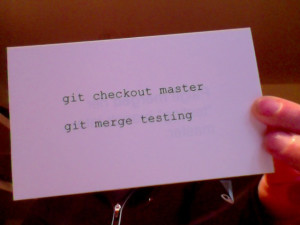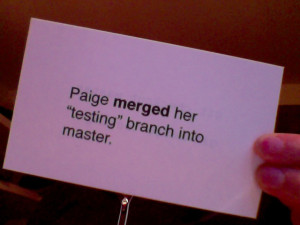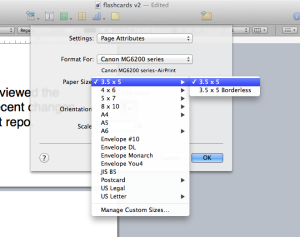We have a ton of individual work done by MoFo and MoCo employees related to feminism, feminist activism and the larger technology community. So much is happening, I can barely keep track!
I’ve reached out to a few people I work with to get some highlights and spread the word about interesting projects we’re all working on. If you are a Mozillian and occasionally or regularly work on feminist issues in the tech community, please let me know! My plan is to ping people every Friday morning and post a blog post about what’s happened in the last week.
Without further ado:
Dispatch from me, Selena Deckelmann:
- I’m presenting at SF Github HQ on Thurs March 13, 7pm as part of the Passion Projects series (Julie Horvath’s project). I’ll be talking about teaching beginners how to code and contribute to open source, specifically through my work with PyLadies. I’m giving a similar talk this afternoon at Portland State University to their chapter of the ACM.
- Just wrapped up a Git workshop for PyLadiesPDX and am gearing up for a test-run of a “make a Flask blog in 80-lines of code” workshop! Course materials are available here for “intro to git” workshops.
- Lukas, Liz, me and others (I’m not sure who all else!!) are coordinating a Geekfeminism and feminist hackerspace meetup at PyCon 2014. The details aren’t published yet, so stay tuned!
- PyLadies PyCon 2014 lunch is happening again!
- PyLadies will also be holding a Mani-Pedi party just like in 2013. Stay tuned for details!
- Brownbags for the most recent GNOME Outreach Program for Women contributors are scheduled for next Friday March 14, 10am and 2pm. (thanks Larissa!!) Tune in at http://air.mozilla.com. One of the GNOME Outreach Program for Women contributors is Jennie Rose Halperin, and another is Sabina Brown.
Dispatch from Liz Henry:
- I’m doing a lot of work to support Double Union feminist hackerspace, a nonprofit in San Francisco. We are hosting tech and arts workshops, and establishing connections with other hackerspaces in the US and around the world. Lukas is also involved with this effort! We have over 100 members now using the space.
- For PyCon I would like to host fairly informal sessions in our Feminist Hacker Lounge, on QA, bug triaging, and running/writing WebQA automated tests with pytest and selenium.
- I’m hoping to have funding for an OPW intern for this upcoming round to work on the back end of a QA community facilitating tool, using Python and various APIs for Mozilla tools like Bugzilla, Moztrap, and the Mozillians profiles.
Dispatch from Lukas Blakk:
- Just held the Lesbians Who Tech hackathon at the Mozilla SF space and it was an amazing weekend of networking, recruiting for Mozilla, doing a stump speech on the radical/political possibilities of open source, and also just a lot of social fun.
- I’m nearing the point of Project Kick Off for The Ascend Project which will be a 6 week training course for underrepresented in current tech mainstream (and underemployed/unpaid) persons who will learn how to write automatable tests for MozMill. This first one will take place at the Portland office in Sept/Oct 2014 (Starts on Sept 8th). There’s so much more here, but this is just a sound bite.
- I’m trying to determine what budget I can get agreement on to put towards women in tech outreach this year.
- PyCon – yes! Such Feminist, So Hackerspace, Much gathering of geek feminists!
Dispatch from Larissa Shapiro:
- OPW wrapup and next session – we’re wrapping up the current round, scheduling brownbags for two of the current interns, etc. Funding is nearly secured for the next round and we have like 6 willing mentors. w00t.
- I’m also providing space for/speaking at an upcoming event in the Mountain View office: last year’s African Techwomen emerging leaders were part of a documentary and the Diaspora African Women’s Network is holding a screening and a planning session for how to support next year’s ELs and other African and African-American bay area women in tech both through this and other projects, March 29. Open to Mozilla folks, let me know if you’re interested.
Anything else that’s come up in the last week, or that you’d like Mozillians to know about? Let me know in the comments!




